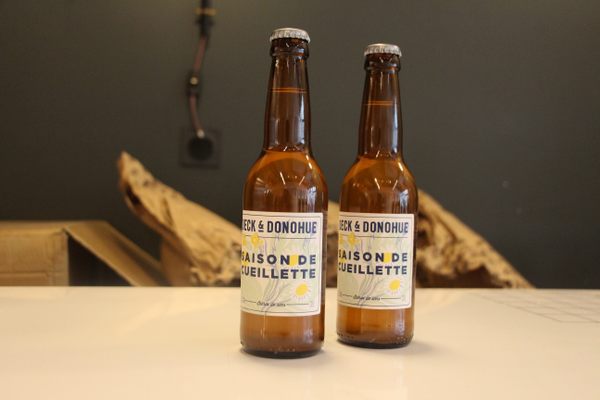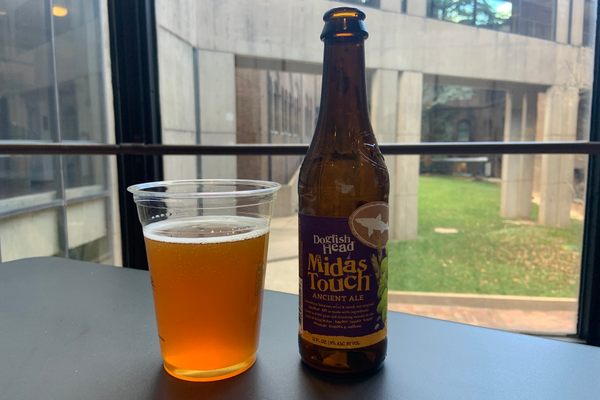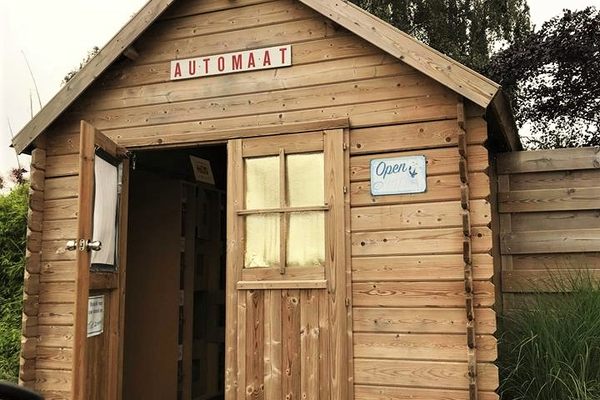These Belgian Monks Are Reopening a Medieval Microbrewery
The operation has been dormant for more than 220 years.

Grimbergen Abbey, a monastery in central Belgium, has burned down three times since it was first built in 1128, hence its phoenix logo. Now, another aspect of the abbey’s history is rising from the ashes: its microbrewery.
The Grimbergen monks had been brewing beer in-house since the 12th century, but had to stop after the monastery burned down in 1798 during the French Revolution. (The area was under French control at the time.) The written recipes were lost, and the local, medieval techniques seemingly consigned to the unreliable realm of lore. It took more than 220 years for the Grimbergen monks to stumble upon the original recipes in the monastery’s archives, but there they were, heroically saved in 1798 by monks who had smuggled them out of the doomed abbey. This week, The Guardian reports, Subprior Karel Stautemas raised a glass of freshly brewed Grimbergen beer to more than 100 onlookers and announced that the brewery is back in business.
Finding the recipes didn’t clear up all of the lingering questions at once. First and foremost, there was a significant language barrier, as all of the recipes were written in unfamiliar strains of old Latin and old Dutch. The abbey had to bring in volunteers to decipher the writings, which ultimately revealed “the hops used, the types of barrels and bottles, and even a list of the actual beers produced centuries ago,” according to Stautemas. Even then, the monks had to consider whether to stay purely faithful to the medieval guidelines, which would have yielded beers rather difficult for our modern palettes to handle. The abbey’s new master brewer, Marc-Antoine Sochon, said that medieval beer “was a bit tasteless,” or comparable to “liquid bread,” so the monks decided to make some modifications. The purists, however, needn’t worry: The medieval monks “kept on innovating” and updated their recipes “every 10 years,” Stautemas said, so the 12 monks who live in the abbey today are well within their traditional rights even as they experiment.

Among the medieval elements remaining in place are the prohibition of artificial additives and the required use of wooden barrels and some specifically local ingredients. Whatever the monks are doing, it’s bound to pack a punch. Their new beer has an alcohol by volume content of 10.8 percent—that’s more than double what you’ll find in a Budweiser, for reference. In The Guardian, Grimbergen’s mayor, Chris Selleslagh, recommended stopping after one or two beverages.
Carlsberg and Heineken’s Alken-Maes brewery have been brewing beer using the Grimbergen name since the 1950s—and while the abbey received some of those profits, it was not actually involved with production. Though the two larger companies will continue to distribute the abbey’s beer and provide professional assistance, the Grimbergen label now refers to more than just a name. As the operation moves back home, NPR reports that Stautemas will receive formal training in the brewing arts so he can do his part. It’s safe to assume that wasn’t covered when he was getting his theology degree.
Gastro Obscura covers the world’s most wondrous food and drink.
Sign up for our regular newsletter.



















Follow us on Twitter to get the latest on the world's hidden wonders.
Like us on Facebook to get the latest on the world's hidden wonders.
Follow us on Twitter Like us on Facebook